
Christian Felix Klein was a German mathematician and mathematics educator, known for his work with group theory, complex analysis, non-Euclidean geometry, and on the associations between geometry and group theory. His 1872 Erlangen program, classifying geometries by their basic symmetry groups, was an influential synthesis of much of the mathematics of the time.

In mathematics, hyperbolic geometry is a non-Euclidean geometry. The parallel postulate of Euclidean geometry is replaced with:
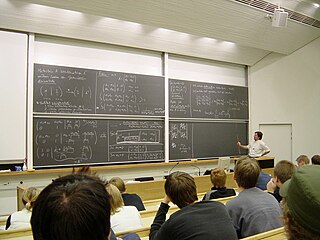
In contemporary education, mathematics education is the practice of teaching and learning mathematics, along with the associated scholarly research.

Cuisenaire rods are mathematics learning aids for students that provide an interactive, hands-on way to explore mathematics and learn mathematical concepts, such as the four basic arithmetical operations, working with fractions and finding divisors. In the early 1950s, Caleb Gattegno popularised this set of coloured number rods created by the Belgian primary school teacher Georges Cuisenaire (1891–1975), who called the rods réglettes.
Founded in 1920, The National Council of Teachers of Mathematics (NCTM) is the world's largest mathematics education organization.
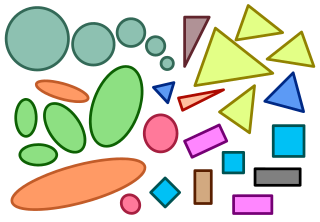
Elementary mathematics consists of mathematics topics frequently taught at the primary or secondary school levels.

Daina Taimiņa is a Latvian mathematician, retired adjunct associate professor of mathematics at Cornell University, known for discovering a groundbreaking way of modelling hyperbolic planes by crocheting objects to illustrate hyperbolic space and innovative use of them teaching geometry.
Mathematics education in New York in regard to both content and teaching method can vary depending on the type of school a person attends. Private school math education varies between schools whereas New York has statewide public school requirements where standardized tests are used to determine if the teaching method and educator are effective in transmitting content to the students. While an individual private school can choose the content and educational method to use, New York State mandates content and methods statewide. Some public schools have and continue to use established methods, such as Montessori for teaching such required content. New York State has used various foci of content and methods of teaching math including New Math (1960s), 'back to the basics' (1970s), Whole Math (1990s), Integrated Math, and Everyday Mathematics.
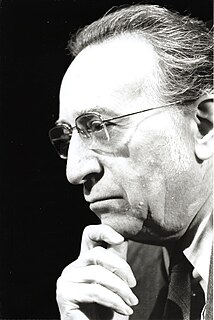
Caleb Gattegno (1911–1988) was an Egyptian educator, psychologist, and mathematician. He is considered one of the most influential and prolific mathematics educators of the twentieth century. He is best known for introducing new approaches to teaching and learning mathematics, foreign languages and reading. Gattegno also developed pedagogical materials for each of these approaches, and was the author of more than 120 books and hundreds of articles largely on the topics of education and human development.
The Geometry Center was a mathematics research and education center at the University of Minnesota. It was established by the National Science Foundation in the late 1980s and closed in 1998. The focus of the Center's work was the use of computer graphics and visualization for research and education in pure mathematics and geometry.
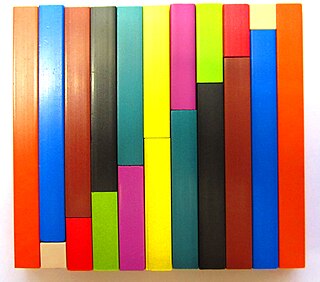
In mathematics education, a manipulative is an object which is designed so that a learner can perceive some mathematical concept by manipulating it, hence its name. The use of manipulatives provides a way for children to learn concepts through developmentally appropriate hands-on experience.
The Association of Teachers of Mathematics (ATM) was established by Caleb Gattegno in 1950 to encourage the development of mathematics education to be more closely related to the needs of the learner. ATM is a membership organisation representing a community of students, nursery, infant, primary, secondary and tertiary teachers, numeracy consultants, overseas teachers, academics and anybody interested in mathematics education.
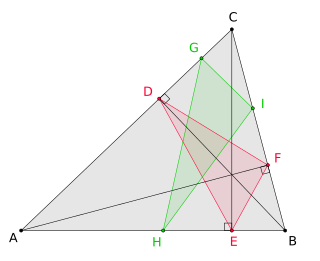
In geometry, Fagnano's problem is an optimization problem that was first stated by Giovanni Fagnano in 1775:
For a given acute triangle determine the inscribed triangle of minimal perimeter.
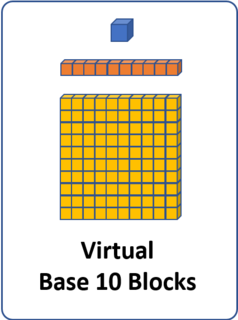
Virtual math manipulatives are visual representations of concrete math manipulatives that are digitally accessed through a variety of websites or apps on digital devices including tablets, phones and computers. Virtual math manipulatives are modeled after concrete math manipulatives that are commonly used in classrooms to concretely represent abstract mathematical concepts and support student understanding of mathematical content.
Additional Mathematics is a qualification in mathematics, commonly taken by students in high-school. It is applied to a range of problems set out in a different format and wider content to the standard Mathematics at the same level.

The Silent Way is a language-teaching approach created by Caleb Gattegno that makes extensive use of silence as a teaching method. Gattegno introduced the method in 1963, in his book Teaching Foreign Languages in Schools: The Silent Way. Gattegno was critical of mainstream language education at the time, and he based the method on his general theories of education rather than on existing language pedagogy. It is usually regarded as an "alternative" language-teaching method; Cook groups it under "other styles", Richards groups it under "alternative approaches and methods" and Jin & Cortazzi group it under "Humanistic or Alternative Approaches".
Modern elementary mathematics is the theory and practice of teaching elementary mathematics according to contemporary research and thinking about learning. This can include pedagogical ideas, mathematics education research frameworks, and curricular material.
The Secondary School Mathematics Curriculum Improvement Study (SSMCIS) was the name of an American mathematics education program that stood for both the name of a curriculum and the name of the project that was responsible for developing curriculum materials. It is considered part of the second round of initiatives in the "New Math" movement of the 1960s. The program was led by Howard F. Fehr, a professor at Columbia University Teachers College.
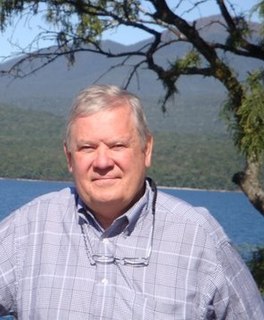
Gary Bitter is an American researcher, teacher, author and pioneer in educational technology. He is Professor of Educational Technology and past Executive Director of Technology Based Learning and Research at Arizona State University. He was a founding board member of the International Society for Technology in Education and served as its first elected president. He is the co-author of the National Technology Standards (NETS) which have been used extensively as a model for National and International Technology Standards.
Origamics: Mathematical Explorations Through Paper Folding is a book on the mathematics of paper folding by Kazuo Haga, a Japanese retired biology professor. It was edited and translated into English by Josefina C. Fonacier and Masami Isoda, based on material published in several Japanese-language books by Haga, and published in 2008 by World Scientific. The title is a portmanteau of "origami" and "mathematics", coined in the 1990s by Haga to describe the type of paper-folding mathematical exploration that would later be described in this book.













